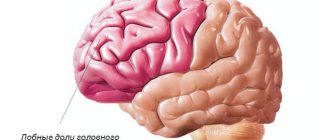Causes of the disease
Classification of cochlear neuritis
- Because of its occurrence, cochlear neuritis in otolaryngology is classified into congenital and acquired. The latter is also divided into post-traumatic, ischemic, post-infectious, toxic, radiation, allergic, and professional. Based on the time of appearance, cochlear neuritis is divided into prelingual - occurring in children before speech development and postlingual - occurring in patients with developed speech.
- According to the level of damage to the auditory analyzer, cochlear neuritis is classified into peripheral, associated mainly with disturbances in sound perception in the inner ear, and central, caused by pathological processes in the auditory structures of the brain.
- Depending on the duration of the disease, there are 3 forms of acquired cochlear neuritis: acute (no more than 1 month), subacute (from 1 to 3 months) and chronic (more than 3 months). According to the nature of the course, reversible, stable and progressive cochlear neuritis is distinguished.
- According to threshold audiometry, there are 4 degrees of hearing loss in cochlear neuritis: mild (I degree) with a threshold of perceived sounds of 26-40 dB, moderate (II degree) with a threshold of 41-55 dB, moderately severe (III degree) - 56-70 dB and severe (IV degree) - 71-90 dB, as well as complete deafness.
Causes of congenital cochlear neuritis
Congenital cochlear neuritis can be caused by pathology at the genetic level or disorders that occurred during childbirth. Hereditary cochlear neuritis is more often observed in combination with other genetic disorders. Hereditary diseases with an autosomal dominant transmission path, the clinical picture of which includes cochlear neuritis, include: Waardenburg syndrome, Stickler syndrome, branchiootorenal syndrome. Autosomal recessive diseases characterized by cochlear neuritis are: Usher syndrome, Pendred syndrome, Refsum disease, biotinidase deficiency. Cochlear neuritis can also be inherited as an X-linked pathology. For example, with Alport syndrome, manifested by hearing loss, progressive glomerulonephritis and various visual impairments. The occurrence of cochlear neuritis during childbirth is associated with birth trauma or fetal hypoxia, which can develop during discoordinated labor, premature birth, prolonged labor due to weak labor, a narrow pelvis of the woman in labor, or a breech presentation of the fetus.
Causes of acquired cochlear neuritis
Acquired cochlear neuritis in 30% of cases is caused by infectious diseases. First of all, these are rubella, mumps, influenza, measles, ARVI, herpetic infection, then scarlet fever, epidemic meningitis, syphilis, typhus and typhoid fever.
About 10−15% of cochlear neuritis is caused by toxic damage to the auditory nerve.
Ototoxic substances used in medicine include: antibiotics (neomycin, kanamycin, gentamicin, streptomycin, etc.), cytostatics (ciplatin, cyclophosphamide), salicylates, quinine preparations, diuretics, drugs for the treatment of arrhythmia. The cause of cochlear neuritis can be intoxication caused by arsenic, salts of heavy metals, gasoline, phosphorus, etc. Toxic cochlear neuritis can be associated with professional activities. Cochlear neuritis, which develops with chronic exposure to noise and vibration, is also of a professional nature.
The occurrence of cochlear neuritis can be caused by a violation of its blood supply as a result of atherosclerosis, thrombosis, hypertension, vascular disorders in the vertebrobasilar region with chronic cerebral ischemia, the consequences of a hemorrhagic or ischemic stroke.
Post-traumatic cochlear neuritis is associated with traumatic brain injury, damage to the auditory nerve during surgical interventions, disruption of the sound-receiving apparatus as a result of barotrauma and aerootitis that developed after it. In some cases, the appearance of cochlear neuritis was observed after acoustic trauma received when exposed to a strong sound (whistle, gunshot, etc.).
Other factors that provoke the occurrence of cochlear neuritis include allergic reactions, acoustic neuroma, hypoparathyroidism, diabetes mellitus, sickle cell anemia, exposure to radiation, Paget's disease, and brain tumors. The development of cochlear neuritis may be a consequence of the aging processes occurring in the auditory nerve in people over 60 years of age.
Symptoms and course of the disease
With neuritis of different origins, the clinical symptoms are the same, the only difference is their intensity.
The main symptom is progressive sensorineural hearing loss (hearing loss), up to complete deafness. In addition, the patient may notice noise and ringing in the ears.
Violation of sound lateralization is also characteristic. With a unilateral lesion, there is a shift in the perceived sound closer to the healthy ear, with a bilateral lesion - to the ear that hears better. Sudden onset cochlear neuritis is characterized by hearing impairment that develops over several hours, usually of a unilateral nature. In most cases, the patient discovers hearing problems after waking up from a night's sleep. In other cases, the acute form of cochlear neuritis can develop within 2-3 days. Acute cochlear neuritis can develop into subacute and chronic forms. During chronic cochlear neuritis, there are 2 stages: stable and progressive. The latter manifests itself as hearing impairment worsens over time and can lead to deafness.
Also, symptoms of auditory neuritis consist of phenomena of irritation and depression of the cochlear and vestibular nerves and sometimes resemble the Meniere symptom complex, while the vestibular apparatus is disrupted. Vestibular symptoms:
- paroxysmal dizziness, which can occur with nausea and vomiting;
- imbalance;
- instability, increasing with a sharp turn of the head;
- uncertainty when walking.
Bilateral cochlear neuritis often leads to a decrease in the emotionality and expressiveness of patients’ speech, causing them to be withdrawn and socially maladjusted.
Treatment of the disease
The main goal of treatment of acute cochlear neuritis is to restore hearing. Treatment of the chronic form of the disease is aimed at stabilizing auditory function.
Acute cochlear neuritis and some cases of progressive chronic cochlear neuritis are an indication for treatment in a hospital. Therapy for cochlear neuritis should be carried out in conjunction with the correction of disorders that could cause it. First of all, this is the elimination of arterial hypertension and hormonal dysfunction, eliminating the effects of ototoxic factors (medicines and other substances, noise, vibration, radioactive radiation).
Drug therapy for cochlear neuritis is carried out with vasodilators, antiplatelet agents, venotonics, neuroprotectors, and detoxification solutions. Combination therapy with trental, vinpocytine, piracetam, Mexidol and Cerebrolysin in the first 2 weeks is carried out by intravenous administration, then proceeds to intramuscular injections and oral administration of drugs. The use of ginkgo biloba in the treatment of cochlear neuritis has a good effect. In the treatment of sudden onset cochlear neuritis, glucocorticoids are additionally used. To relieve dizziness, histamine-like drugs (betagistine) are used.
Physiotherapeutic treatment methods have a positive stimulating effect:
- reflexology (electropuncture, laser puncture, acupuncture);
- electrical stimulation;
- phonophoresis of drugs;
- oxygen barotherapy.
Bilateral hearing loss of up to 40 dB complicates the patient’s speech communication and is an indication for hearing aids. The prelingual form of cochlear neuritis is an indication for wearing a hearing aid at a hearing threshold of 25 dB, since it has been proven that such hearing loss causes disturbances in the development of speech in a child. For the purpose of hearing protection for cochlear neuritis, analog, digital and linear hearing aids can be used. The selection and adjustment of the device is carried out by a hearing therapist.
Surgical treatment of cochlear neuritis is carried out to perform stem or cochlear implantation, removal of acoustic neuroma, hematoma or brain tumor. The need for surgical treatment may be due to painful ear noise or attacks of intense dizziness. In such cases, removal of the stellate ganglion, resection of the tympanic plexus or cervical sympathectomy is performed; in case of deafness or IV degree hearing loss, destructive operations on the cochlea are performed.
2. Reasons
Cochlear neuritis can develop under the influence of many factors:
- infectious diseases (flu, measles, ARVI, herpes, scarlet fever, etc.);
- intoxication with salts of heavy metals, industrial hydrocarbons, drugs (antibiotics, chemotherapy, antiarrhythmics, diuretics, etc.);
- industrial hazards (vibration, noise);
- acute and chronic conditions associated with cerebrovascular disorders (blood supply to the brain);
- traumatic brain, acoustic, radiation, birth injuries;
- cancer;
- neurodegenerative processes and age-related changes.
As can be seen from the above, in most cases, cochlear neuritis is acquired. However, there is also congenital sensorineural hearing loss, which is usually caused by hereditary factors and is one of the elements of one or another chromosomal syndrome.
Visit our Otolaryngology (ENT) page
Diagnosis of the disease
The main diagnostic method is an audiogram. Sometimes impedance measurements and Dopplerography of the vessels of the head and neck are additionally performed.
On otoscopic examination of the ear, the eardrum is usually intact.
The study of hearing in whispered and spoken speech reveals a decrease in the perception of high-pitched sounds. However, with pronounced atrophic-degenerative changes, the perception of low sounds may decrease. A positive Rinne test is noted in the initial manifestations of neuritis and a negative one - with a developed process. Research according to Weber, when there is bilateral neuritis, does not lateralize the sound, when there is unilateral neuritis, the lateralization of the sound will be in the healthy direction. The Schwabach test is sharply shortened, the Jelly test is positive.
An audiometric study reveals lesions of the sound-receiving apparatus, characterized by the same impairment of hearing both by air and bone conduction (the bone and air conduction curves are at the same level). In some cases, a paradoxical increase in volume is observed.
It is necessary to differentiate between acoustic neuritis and otosclerosis, in which bone conduction is well preserved.
Symptoms
Cochleovestibular syndrome consists of:
- Sensorineural hearing loss.
- Systemic dizziness.
- Balance imbalance.
Since cochleovestibular syndrome does not occur in isolation, patients complain of neurological disorders:
- frequent headaches;
- memory impairment, absent-mindedness;
- sleep disturbance;
- slowing down the pace of thought;
- neurasthenia: weakness, irritability, gloomy mood;
- decreased visual acuity, double vision, pain when moving the eyeballs;
- decreased sense of taste and smell.
The first signs are hearing loss and dizziness. Then the balance is upset and complaints of discirculatory encephalopathy appear.
Dizziness is the main symptom of the disease. An attack of dizziness is accompanied by vegetative manifestations: sweating, increased heart rate, shortness of breath, pale skin, nausea and vomiting. Dizziness is paroxysmal: there is a feeling that objects around are moving towards the ear. Nystagmus is directed towards the movements of objects - rapid and rhythmic turns of the eyes. An attack of dizziness can last from a few minutes to several days.
Cochleovestibular syndrome can be complicated by Meniere's disease, when endolymph accumulates in the inner ear and the pressure inside the labyrinth increases. It manifests itself as deafness in one ear, tinnitus and autonomic disorders.
Prices
| Disease | Approximate price, $ |
| Prices for diagnosis and treatment of sinus pathologies | 10 370 — 17 560 |
| Prices for the treatment of thyrotoxic goiter | 22 590 — 22 670 |
| Prices for treatment of laryngeal cancer | 6 170 — 77 000 |
| Disease | Approximate price, $ |
| Prices for diagnosing migraine | 7 060 — 8 260 |
| Prices for diagnosing childhood epilepsy | 3 100 — 4 900 |
| Prices for brain shunting for hydrocephalus | 33 180 |
| Prices for treatment of Parkinson's disease | 58 600 |
| Prices for migraine treatment | 9 680 |
| Prices for the diagnosis of amyotrophic lateral sclerosis | 6 550 |
| Prices for diagnosing epilepsy | 3 520 |
| Prices for rehabilitation after a stroke | 78 300 — 82 170 |
| Prices for treatment of childhood epilepsy | 3 750 — 5 450 |
| Prices for treatment of multiple sclerosis | 4 990 — 17 300 |
Otolaryngology in Israel receives extremely positive reviews, and the reason for this is not only the high effectiveness of the treatment, but also its affordable cost for most medical tourists. Prices for diagnostic and treatment procedures in Israeli hospitals are at least a third lower than in similar medical institutions in Western Europe, the USA, Canada and other countries with developed medicine.
The cost of treatment for an ENT disease in Israel depends on its nature, location, stage of development, medications used, the number and type of diagnostic procedures required, therapeutic methods, as well as the individual characteristics of the patient. You can find out the approximate cost of solving a particular ENT problem from a medical representative of the clinic during a free consultation. The final cost will be clear on the spot, after all examinations have been completed and the treatment plan has been approved by the doctor.
Central and peripheral vestibular syndrome
Recently, interest in the problems of dizziness and balance disorders has increased significantly. This is due not only to the growing number of patients turning to doctors with similar complaints, but also to the emergence of new diagnostic methods, the creation of both specific pharmacological drugs and methods of rehabilitation therapy. A lecture on the topic of dizziness in the practice of a neurologist was held on April 13 and within the framework of the All-Russian educational Internet program for doctors. Natalya Stepanovna Alekseeva, Doctor of Medical Sciences, specialist at the Scientific Center of Neurology of the Russian Academy of Medical Sciences, spoke about the specifics of central and peripheral vestibular syndromes, which are characterized by symptoms of dizziness.
Classification of cochleovestibular disorders at different levels of damage:
1. Peripheral level
- Labyrinthine lesion
- Radicular lesion
2. Central level
- Subtentorial truncal lesion
- Supratentorial lesion
3. Combined level of damage
The main diseases that occur when vestibular formations are damaged at various levels:
Lesion: Peripheral receptor and vestibular nerve in the pyramid of the temporal bone (vestibular ganglion, nerve in the internal auditory canal).
Disease: Meniere's disease (hydropses of the endolymphatic sac); vascular disorders in the labyrinthine artery (LA); cracks of the pyramid of the temporal bone; neuritis of the vestibular portion of the VIII nerve; intoxication with ototoxic antibiotics; neurovascular conflict.
Lesion: Vestibular nerve in the cerebellopontine angle
Disease: Otogenic arachnoiditis of the cerebellopontine angle; neuritis of the vestibular portion of the VIII nerve; vascular disorders in the vertebrobasilar system (neurovascular conflict); intracanal neuromas of the VIII nerve.
Damage: Brain stem, cerebellum, IV ventricle.
Disease: Vascular disorders in the vertebrobasilar system (arterial hypertension, atherosclerosis, vascular thrombosis, hemorrhages, stroke); encephalitis; cerebellar tumors (angioreticularomas, astrocytomas), tumors of the fourth ventricle (choroid papillomas, ependymomas, cysticerci).
Damage : cerebral cortex.
Disease: Vestibular aura in the form of dizziness in temporal lobe epilepsy of tumor, inflammatory and vascular etiology.
Clinical example: central vestibular syndrome in a sick man with hypertension and atherosclerosis:
Mild manifestations of atherosclerosis in the form of thickening up to 1.1 mm. intima-media complex of both CCAs (common carotid artery) and a hemodynamically insignificant atherosclerotic plaque in the bifurcation of the left CCA and ICA (internal carotid artery, stenosis up to 30%), tortuosity of both ICAs, late entry of the left VA into the canal (at the C5 level). Clinical blood test shows hemoglobin 171.
Characteristics of peripheral vestibular syndrome:
- Nystagmus is often horizontal unilateral with a rotor component
- Vestibular disorders are accompanied by unilateral noise and hearing loss
- Decreased response to caloric test on the affected side
- No neurological symptoms
Differential diagnosis of PCVS (peripheral cochleovestibular syndromes) with other diseases:
- Bilateral vestibulopathy
- Meniere's disease
- Chronic otitis media, labyrinthitis
- Psychogenic dizziness
- TBI (traumatic brain injury)
- BPPV (benign paroxysmal positional vertigo)
Frequency of developmental anomalies of the vertebral arteries in patients with hypertension and peripheral dizziness ( N=60):
- Asymmetry of diameters – 36%
- Anomalies (hypoplasia) – 25%
- Deformations – 22%
- Anomalies of the entry of the vertebral artery into the canal – 9%
- Absence of posterior communicating arteries – 10%
Damage to the vestibular nerve in the cerebellopontine angle:
- Vascular disorders in the vertebrobasilar system - VBS (Meniere's syndrome)
- Neurovascular conflict
- Neuromas of the VIII nerve
- Arachnoiditis of the cerebellopontine angle
- Neuritis of the vestibular portion of the VIII nerve
Central vestibular syndrome:
- Dizziness due to imbalance
- Auditory symptoms are mild, or one-sided deafness occurs simultaneously with vestibular disorders
- Neurological symptoms are detected
- Structural changes in the vertebral arteries (stenosis, occlusion, dissection and deformation)
Conclusion: The otoneurological method diagnoses peripheral and central vestibular syndromes, and comparison of the results obtained with the state of blood flow in the vessels of the VBS according to ultrasound techniques, CT, and MRI allows us to identify the main pathogenetic mechanisms of their development, which is the key to successful pathogenetic therapy.
Read about the characteristics of dizziness in patients with arterial hypertension in the material “Dizziness: life-threatening?!”>>
Photo: https://zianarmie.wordpress.com











